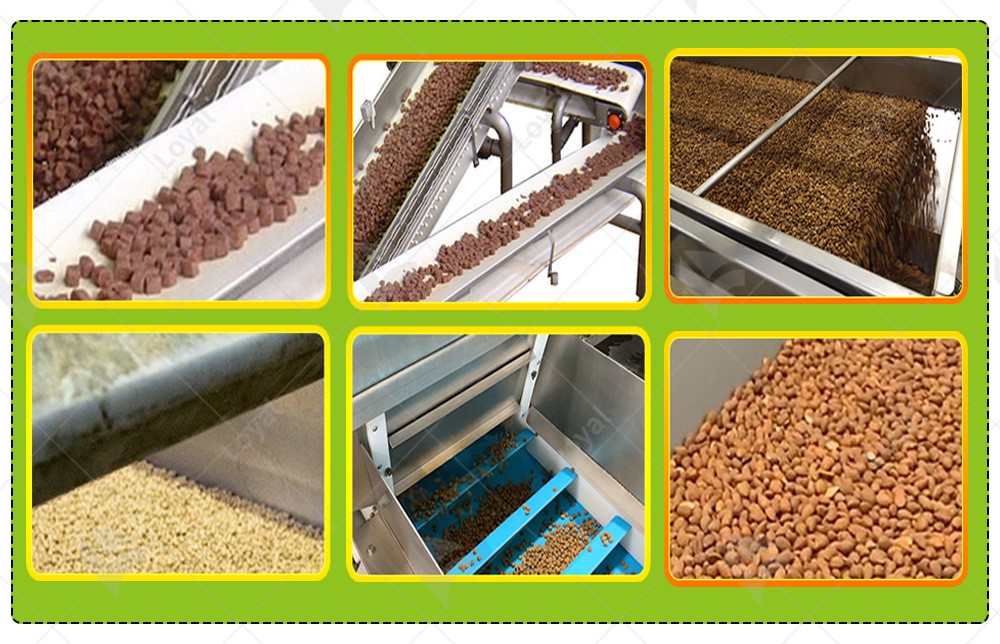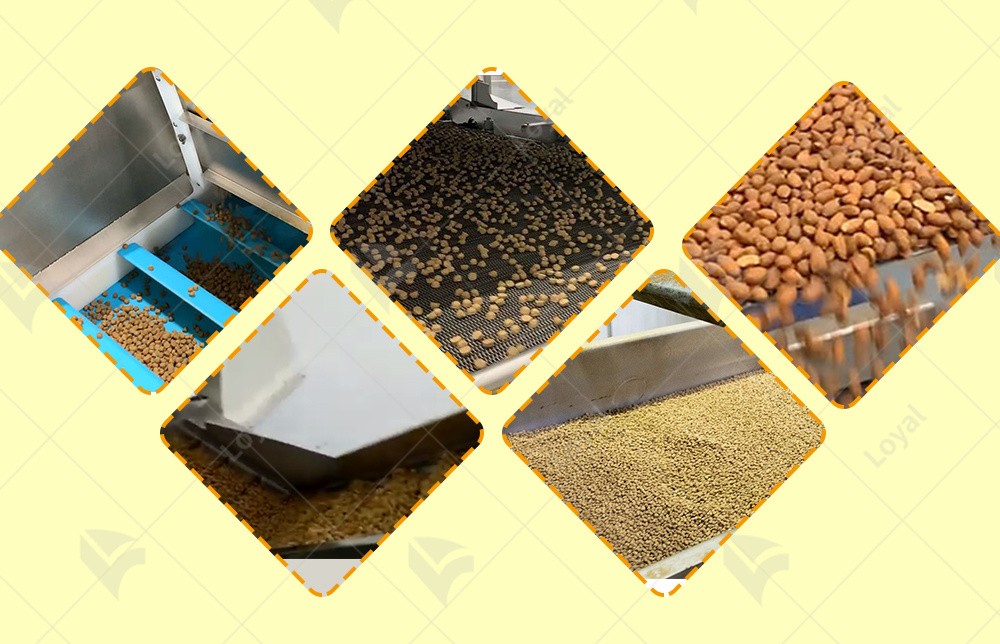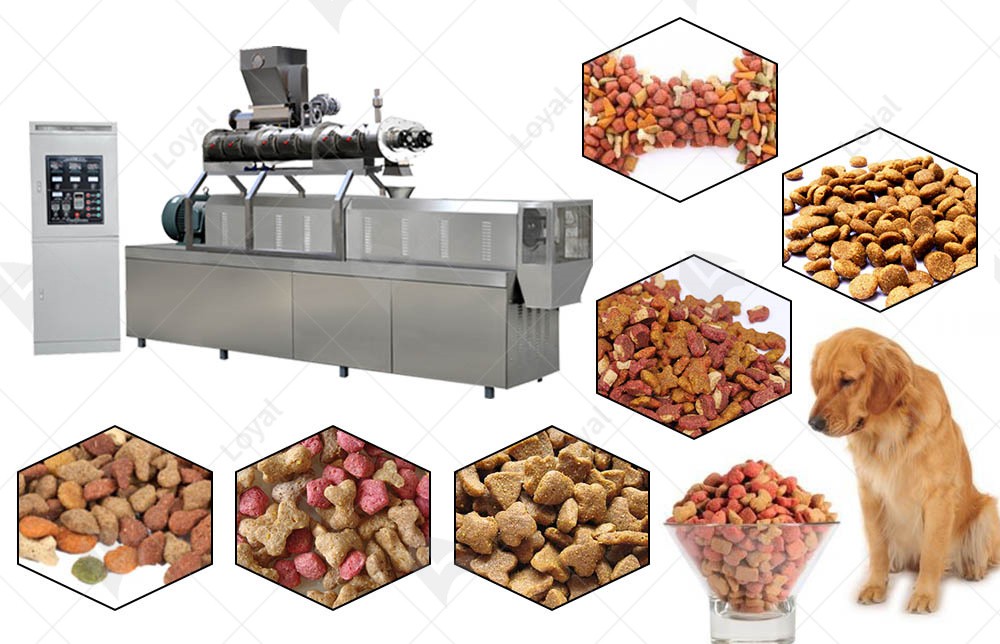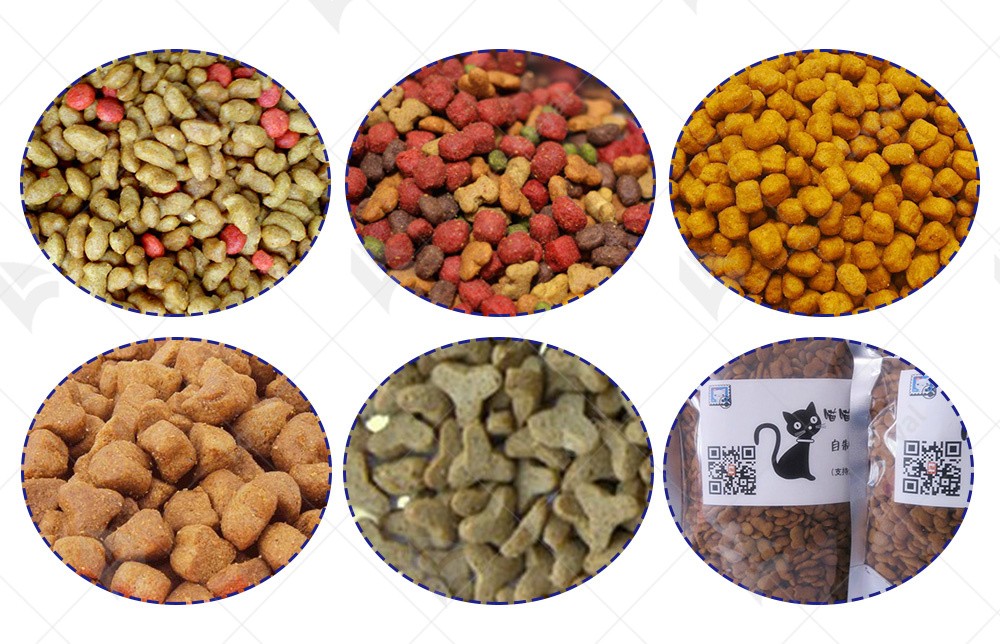Unlock The Secrets Of Efficient Pet Food Production Line Equipment Manufacturing
Brief Overview of the Pet Food Industry and Its Growth
The pet food industry has experienced remarkable growth in recent years, fueled by a surge in pet ownership and the increasing humanization of pets. As pets become more integral parts of families, owners are willing to invest in high-quality, nutritious food products that cater to their pets' unique dietary needs and preferences. This trend has led to a proliferation of pet food manufacturers, driving innovation and competition within the industry.
The global pet food market is estimated to have grown significantly over the past decade, with continued growth projected for the foreseeable future. This growth can be attributed to several factors, including:
|
Rising Pet Ownership |
As living standards improve and lifestyles change, more people are adopting pets. The increasing popularity of pets, particularly dogs and cats, has created a significant demand for pet food products. |
|
Increasing Consumer Awareness |
Pet owners today are more informed about pet nutrition and the importance of feeding their pets healthy, balanced diets. This has led to a growing demand for premium, specialized pet food products that meet specific dietary requirements, such as grain-free, organic, or hypoallergenic formulas. |
|
Advancements in Technology |
Technological advancements have revolutionized the pet food industry, enabling manufacturers to produce a wider range of innovative products. From dry kibble to wet food, raw diets, and treats, there is now a diverse array of options available to pet owners. |
|
E-commerce and Retail Expansion |
The rise of e-commerce platforms and the expansion of retail networks have made it easier for pet owners to access pet food products. Online shopping and home delivery services have become increasingly popular, offering convenience and a wider selection of products to consumers. |
Amidst this growth, the role of Pet Food Production Line Equipment has become increasingly critical. Fully automated production lines offer manufacturers the ability to efficiently and consistently produce large quantities of high-quality pet food products, while also minimizing waste and reducing their environmental footprint. By incorporating advanced technologies such as robotics, automation, and data analytics, manufacturers can optimize their production processes, improve product quality, and meet the evolving needs of pet owners.
As the pet food industry continues to evolve, the demand for efficient and eco-friendly production methods will only increase. Fully automated Pet Food Production Line Equipment represents the future of the industry, enabling manufacturers to stay ahead of the curve and capitalize on the growing market opportunities.

Efficiency Gains with Fully Automated Equipment
In the realm of pet food production, the adoption of fully automated equipment has revolutionized the industry, ushering in a new era of efficiency and productivity. As manufacturers strive to meet the growing demand for high-quality pet food products, automated production lines have emerged as a game-changer, offering numerous advantages over traditional, manual methods.
1.Streamlined Production Processes: Fully automated Pet Food Production Line Equipment streamlines production processes from start to finish. By automating tasks such as ingredient mixing, extrusion, drying, cutting, and packaging, manufacturers can significantly reduce the time and labor required to produce each batch of pet food. This not only increases production capacity but also ensures consistency and quality across all products.
2.Reduced Waste and Cost Savings: Automation minimizes waste by precisely controlling the amount of ingredients used and optimizing production processes. With fewer errors and less manual handling, there is less room for product spoilage or contamination. Additionally, the reduced need for labor translates into cost savings for manufacturers, allowing them to reinvest in further innovation and expansion.
3.Enhanced Product Quality: Automated production lines are equipped with advanced sensors and control systems that monitor and adjust production parameters in real-time. This ensures that each batch of pet food meets strict quality standards, resulting in products that are more nutritious, palatable, and safe for pets to consume.
4.Increased Flexibility and Scalability: Fully automated equipment offers manufacturers greater flexibility and scalability. With the ability to quickly adjust production settings and switch between different product formulations, manufacturers can easily adapt to changing market demands and consumer preferences. Furthermore, as production volumes increase, automated lines can be easily scaled up to meet the growing demand without compromising efficiency or quality.
5.Eco-Friendly Operations: In addition to efficiency gains, fully automated Pet Food Production Line Equipment also contributes to eco-friendly operations. By reducing waste, minimizing energy consumption, and optimizing resource utilization, automated lines help manufacturers reduce their environmental footprint. This aligns with the growing trend towards sustainable and responsible production practices in the pet food industry.

Eco-Friendliness in Pet Food Production
As the global demand for pet food continues to soar, the pet food industry is increasingly turning to eco-friendly practices to reduce its environmental impact. Fully automated Pet Food Production Line Equipment plays a pivotal role in achieving this goal, offering manufacturers a range of sustainable benefits that transcend mere efficiency gains.
|
Reduced Waste and Recycling |
One of the most significant eco-friendly advantages of automated production lines lies in their ability to minimize waste. By precisely controlling ingredient usage and optimizing production processes, automated systems reduce the amount of excess material generated during production. Furthermore, many modern automated lines are designed with waste recovery systems that enable the recycling or reuse of by-products, such as scrap materials or water used in cleaning processes. |
|
Energy Efficiency |
Fully automated Pet Food Production Line Equipment is often engineered for maximum energy efficiency. Advanced motors, drive systems, and control algorithms optimize energy usage, reducing the overall carbon footprint of the production process. Manufacturers can further enhance their eco-credentials by investing in renewable energy sources, such as solar or wind power, to power their automated lines. |
|
Sustainable Materials and Packaging |
In addition to optimizing production processes, automated lines can also facilitate the use of sustainable materials and packaging. Many modern pet food manufacturers are adopting eco-friendly packaging solutions, such as biodegradable or recyclable materials, to reduce their environmental impact. Automated lines can be configured to accommodate these materials, ensuring that they are seamlessly integrated into the production process. |
|
Water Conservation |
The pet food production process often involves significant water usage, particularly in cleaning and cooling operations. Automated Pet Food Production Line Equipment can help manufacturers conserve water by implementing advanced water recycling systems and optimizing water usage through precise control of production parameters. |
|
Emissions Reduction |
Automated production lines also contribute to emissions reduction. By reducing the need for manual labor and optimizing production processes, automated systems reduce the amount of fuel consumed by transportation vehicles and other equipment required during production. This, in turn, decreases greenhouse gas emissions and other pollutants, supporting manufacturers' efforts to adopt environmentally responsible practices. |
In conclusion, fully automated Pet Food Production Line Equipment is a vital tool for achieving eco-friendliness in the pet food industry. By reducing waste, enhancing energy efficiency, facilitating the use of sustainable materials and packaging, conserving water, and reducing emissions, automated lines enable manufacturers to produce high-quality pet food while minimizing their environmental impact. As the industry continues to evolve, the adoption of eco-friendly automated production lines will be crucial for manufacturers to stay ahead of the curve and meet the growing demand for sustainable pet food products.

Future Trends and Innovations
As the pet food industry continues to evolve, the demand for efficient and eco-friendly Fully Automated Pet Food Production Line Equipment is on the rise. This trend is driven by a combination of factors, including consumer preferences for sustainable products, advancements in technology, and the need for increased production capacity to meet growing demand. Here, we explore some of the key future trends and innovations that are shaping the landscape of automated pet food production lines.
1.Increased Automation and Connectivity: One of the most significant trends in automated pet food production is the integration of advanced automation and connectivity technologies. This includes the use of artificial intelligence (AI), machine learning (ML), and the Internet of Things (IoT) to optimize production processes, reduce downtime, and enhance overall efficiency. With these technologies, manufacturers can gain real-time insights into their production lines, enabling them to make data-driven decisions that drive continuous improvement.
2.Flexibility and Customization: As pet food preferences become more diverse, manufacturers are seeking pet food production line equipment that offers flexibility and customization. This includes the ability to quickly switch between different product formulations, adjust production speeds, and accommodate a wide range of ingredients and packaging formats. Fully automated lines equipped with modular designs and quick-changeover capabilities are well-positioned to meet these demands, enabling manufacturers to stay agile and responsive to market trends.
3.Sustainability and Eco-Efficiency: As mentioned earlier, eco-friendliness is a key driver of innovation in the pet food industry. Manufacturers are increasingly seeking pet food production line equipment that minimizes waste, conserves energy and water, and reduces emissions. Future innovations in this area may include the development of more efficient motors and drive systems, advanced waste recovery and recycling technologies, and the integration of renewable energy sources into production processes.
4.Enhanced Food Safety and Quality Control: Food safety and quality control are paramount in the pet food industry. Fully automated production lines equipped with advanced sensors, cameras, and other inspection technologies can help manufacturers ensure that their products meet the highest standards of safety and quality. These systems can detect contaminants, monitor production conditions, and track product traceability, providing manufacturers with the confidence they need to deliver safe and nutritious pet food to consumers.
5.Digitization and Smart Manufacturing: The integration of digital technologies into pet food production processes is another key trend. Smart manufacturing, which combines advanced automation, connectivity, and data analytics, enables manufacturers to optimize their production lines, reduce waste, and improve overall performance. By leveraging these technologies, manufacturers can create more efficient and sustainable production systems that meet the evolving needs of the pet food industry.

Overcoming Challenges and Considerations
As the pet food industry embarks on the journey towards full automation, manufacturers face a range of challenges and considerations that must be addressed to ensure the success of their pet food production line equipment. In this section, we delve into some of the key challenges and offer insights on how to overcome them, while maintaining a focus on efficiency and eco-friendliness.
1. Initial Investment Costs:
One of the primary challenges manufacturers face when adopting fully automated pet food production line equipment is the significant initial investment required. Advanced automation technologies, such as robotics, AI, and IoT, can be costly to implement. However, it's important to recognize that these investments often pay off in the long run through increased productivity, reduced labor costs, and improved product quality. To manage these costs, manufacturers can consider phasing in automation technologies over time, prioritizing investments in areas where the greatest return on investment can be achieved.
2. Technical Expertise and Training:
Another challenge is the need for technical expertise to operate and maintain fully automated production lines. Manufacturers must ensure that their teams have the necessary skills and knowledge to leverage the full potential of their equipment. This includes providing comprehensive training programs and fostering a culture of continuous learning. Collaborating with equipment suppliers and industry experts can also be beneficial in acquiring specialized knowledge and best practices.
3. Integration with Existing Systems:
For manufacturers transitioning from semi-automated or manual production processes, integrating fully automated pet food production line equipment into existing systems can be a complex task. It's crucial to carefully plan and coordinate the integration process to minimize disruptions and ensure seamless integration. This may involve upgrading existing infrastructure, such as electrical and data networks, and modifying production layouts to accommodate new equipment.
4. Ensuring Food Safety and Quality Control:
With increased automation, manufacturers must ensure that their production lines maintain the highest standards of food safety and quality control. This includes implementing robust inspection and testing protocols, as well as leveraging advanced technologies such as sensors and cameras to detect contaminants and monitor production conditions in real-time. Regular audits and third-party certifications can also help to instill consumer confidence and demonstrate commitment to safety and quality.
5. Sustainability and Environmental Impact:
As the focus on sustainability grows, manufacturers must consider the environmental impact of their pet food production line equipment. This includes minimizing waste, conserving energy and water, and reducing emissions. Manufacturers can achieve this by selecting eco-friendly equipment, implementing waste reduction strategies, and adopting renewable energy sources where possible. Additionally, they can consider incorporating circular economy principles into their production processes to maximize resource efficiency and reduce waste.

Reference
The following are five authoritative foreign literature websites in the field of Industrial food machinery:
1. Food Engineering Magazine
Website: https://www.foodengineeringmag.com/
2.Food Processing Magazine
Website: https://www.foodprocessing.com/
3.Journal of Food Engineering
Website:https://www.journals.elsevier.com/journal-of-food-engineering
4. Food Manufacturing Magazine
Website:https://www.foodmanufacturing.com/
5. International Journal of Food Science & Technology
Website:https://onlinelibrary.wiley.com/